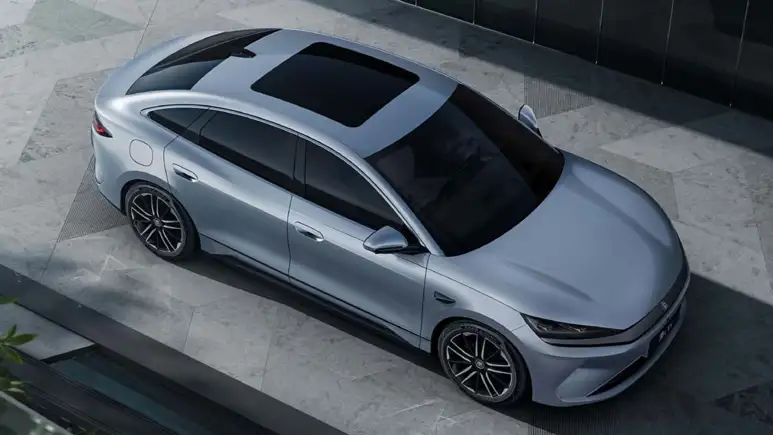In a world where sustainability is more than just a buzzword, BYD’s Blade Battery is making waves in the electric vehicle (EV) industry. With its unique design and enhanced safety features, the Blade Battery has been touted as a game-changer, offering a promising glimpse into the future of electric cars. In this article, we’ll explore how BYD’s innovative battery technology is reshaping the EV landscape, delve into its key features, and provide insights on what this means for the average consumer.
The Revolution of Battery Technology
BYD’s Breakthrough with the Blade Battery
In March 2020, BYD, a leading Chinese automaker, unveiled its revolutionary Blade Battery. Unlike traditional lithium-ion batteries, the Blade Battery uses a lithium iron phosphate (LFP) chemistry, which offers improved safety and longer life cycles. This breakthrough comes at a time when safety and durability are paramount concerns for EV manufacturers and consumers alike.
- Safety First: The Blade Battery is designed to withstand extreme conditions. It has passed the nail penetration test, often considered the most rigorous way to test battery safety. This test showed that the Blade Battery does not emit smoke or fire, and its surface temperature remains between 30°C and 60°C, even when punctured.
-
Longevity and Efficiency: The Blade Battery promises over 3,000 charging cycles, translating to more than 1 million kilometers of driving. This is a significant improvement over traditional batteries, which typically last for about 1,500 cycles.
Performance and Environmental Impact
The performance of the Blade Battery is not just about longevity; it also contributes to a more sustainable environment. With its use of LFP chemistry, the Blade Battery is less reliant on cobalt, a metal that has significant environmental and ethical concerns associated with its mining.
- Enhanced Range: EVs equipped with Blade Batteries can achieve ranges comparable to those with traditional lithium-ion batteries, without the associated risks of overheating.
-
Reduced Carbon Footprint: The production process of the Blade Battery is more eco-friendly, aligning with global trends towards reducing carbon footprints in manufacturing.
Practical Implications for Consumers
How to Charge a BYD Blade Battery
Charging an EV with a Blade Battery is straightforward, thanks to its compatibility with existing charging infrastructure. However, to maximize the battery’s life and efficiency, consider the following tips:
- Use a Level 2 Charger: For everyday charging, a Level 2 charger offers the best balance between charging speed and battery health.
- Avoid Frequent Fast Charging: While the Blade Battery can handle fast charging, frequent use can reduce its lifespan.
- Maintain Optimal Charge Levels: Keeping the charge between 20% and 80% can help prolong the battery’s life.
Where to Buy and What to Compare
Currently, BYD’s Blade Battery is available in its models like the BYD Han and Tang. When considering an EV with a Blade Battery, compare the following features:
- Range: Ensure that the range offered meets your daily driving needs.
- Warranty: BYD offers a comprehensive warranty on its batteries, providing peace of mind for potential buyers.
- Price: Compare the cost of models equipped with Blade Batteries to those with traditional lithium-ion batteries to determine value for money.
The Future of Blade Battery Technology
Expanding Influence Beyond BYD
The success of BYD’s Blade Battery has not gone unnoticed. Other automakers are beginning to take interest in this technology as they look to enhance the safety and longevity of their EVs. Industry reports suggest that partnerships and collaborations could soon bring Blade Battery technology to a wider range of vehicles, including those from well-known brands like Tesla and Volkswagen.
Challenges and Opportunities
While the Blade Battery offers numerous advantages, its adoption is not without challenges. The shift from traditional lithium-ion technology requires significant investment in research and development. However, the potential benefits, including improved safety, reduced costs, and enhanced environmental sustainability, make it a compelling option for the future.
- Investment in Infrastructure: As more automakers adopt Blade Battery technology, investments in manufacturing and charging infrastructure will be crucial.
- Consumer Education: Educating consumers about the benefits of Blade Batteries will be essential to drive widespread adoption.
Conclusion: A New Era for Electric Vehicles
In summary, BYD’s Blade Battery is a significant step towards the future of electric cars, offering a blend of safety, efficiency, and sustainability that is unmatched by traditional battery technologies. As this innovation continues to gain traction, it could well redefine consumer expectations and industry standards for EVs worldwide.
Are you ready to embrace this new era of electric vehicles? Share your thoughts in the comments below. As we look to the future, the potential for Blade Battery technology to transform the EV landscape is immense, promising safer, more sustainable driving experiences for all.

